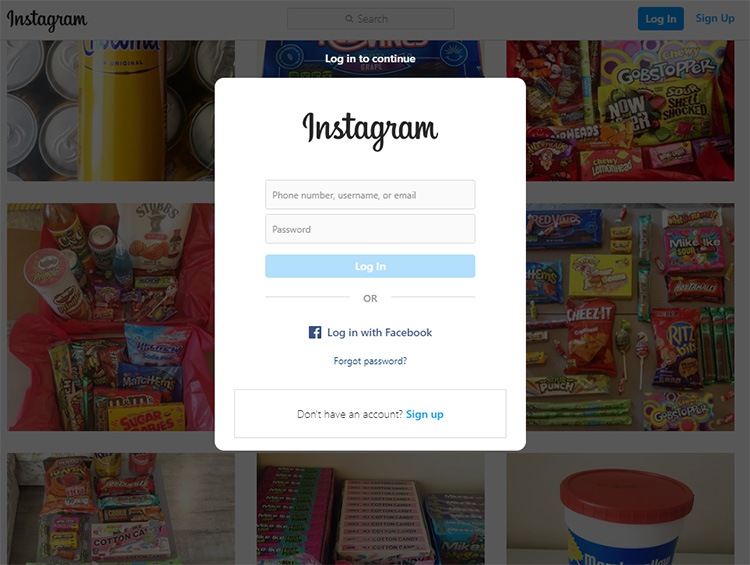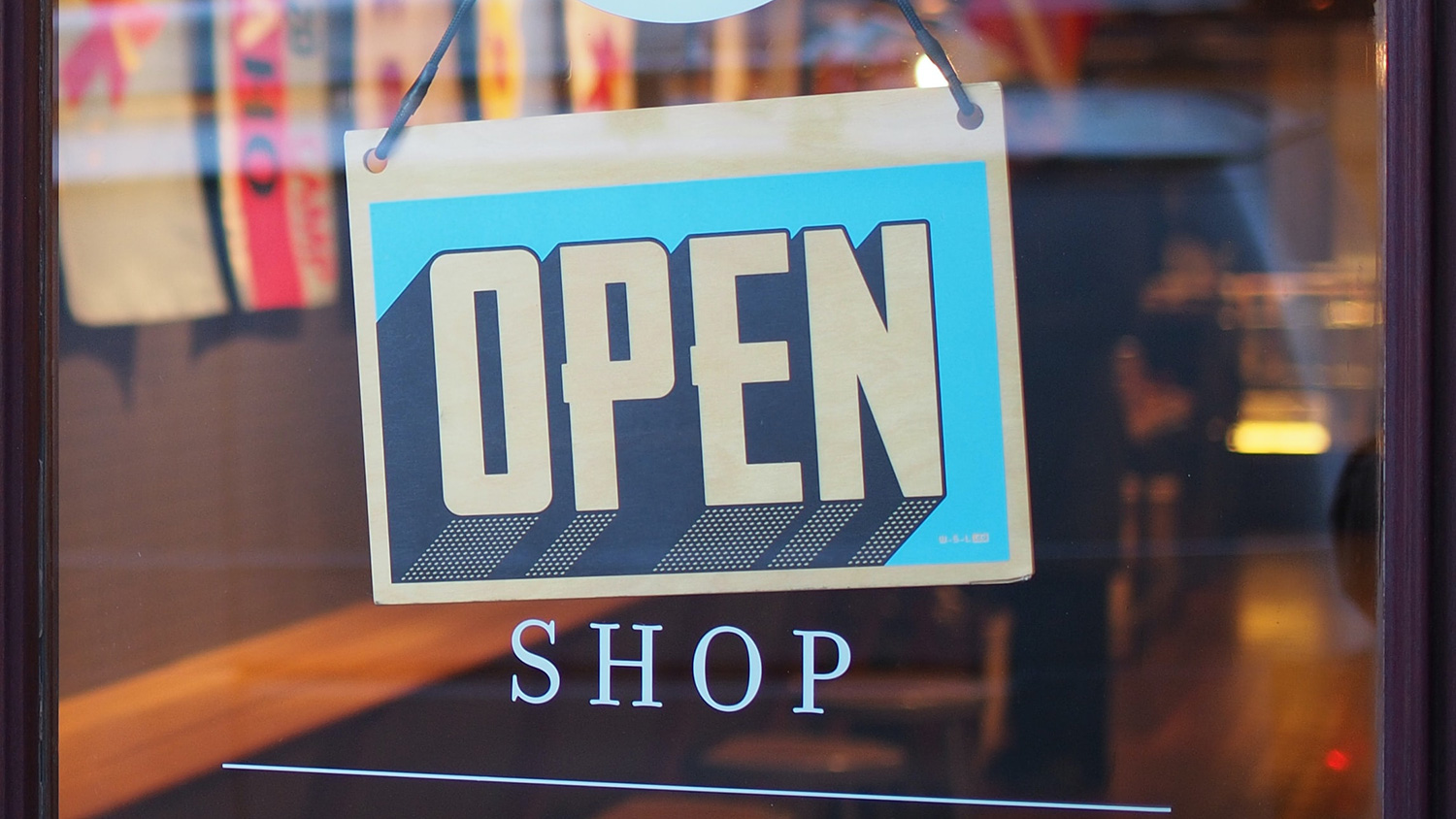I’m not originally from the UK. I grew up in Southern California and along with a regular need for tacos and trips to Disneyland, I also get the craving for American candy. SweeTARTs, Jolly Ranchers, Reeses’ Pieces, Hot Tamales, Now ‘n’ Laters, Lemonheads… And let’s not even talk about my love of pumpkin spice.
So when a shop posted on the local Facebook group and said they’d deliver, I got excited — I’ve been running low on my collection of American candy, and, finally, I’d be able to rebuild my stocks.
But I ran into an issue. They didn’t have an online shop. They didn’t even have a website.
They had an Instagram account.
Which meant that, every time I tried to figure out how to order with them, I saw this instead:

No way to see how much things cost. No way to find out how to order. Just a giant log-in box blocking my view of all those delicious treats.
This is something I’ve been seeing a lot recently. Instead of having their own online store, retailers are putting up their wares on Facebook, Instagram, or other platforms. This might seem like a great idea for small businesses, especially if you’re on your own and doing it as a side gig to your main job, but there are definite pitfalls.
And although it takes a bit more work in the beginning, having your own website is the best way to sell your products online.
It gives you credibility
With a lot of the businesses I see selling on social media, there doesn’t seem to be an easy way to actually purchase an item — and a lot of the time, it doesn’t seem like they have a secure way to take payments. They might ask you to read your credit card details over the phone. They might ask you to send money to a personal account rather than a business one. They might even ask you to put your card details into Facebook messenger.
Security is a major part of a business’s credibility. Do your customers trust your business enough to give you their money?
It’s hard enough selling online. Why would you miss the opportunity to give your customers a little more security? Set up a PayPal button, get on Stripe, pick something that gives you a lot more credibility than just telling people to call in.
Your customers can see you
Social networks want their users to stay within their own system. The more time a person spends within their system, the more data they can collect on them, the more targeted ads they can show, the more revenue they receive. Which means that if you don’t have an account with them, you’re not profitable for them. They can’t track you, they can’t target their advertising to you, and you’re just not as interesting.
So when you have a shop on a social network, you’re only able to sell your products to the people in that system. Which might be a lot of people (Facebook alone has over 2 billion users), but if you’re focused on a specific audience, that doesn’t mean that your customers will see you.
Not to mention the searches you might be missing out on from search engines. A decently optimised website will show up higher in search engine results than social media posts.
You have (next to) no restrictions
When you set up a business on social media, you’re limited by the requirements of that particular social network. Putting in all the details for your products in 280 characters. Fitting your portrait-sized images into Instagram’s squares. Trying to pick between five different company categories, none of which actually really fit your business.
With your own website, it can be whatever you want it to be. Write 1000-word essays on the wonders of your products. Have giant images beautifully displayed. Don’t worry about changing the products available, because you can add as many categories as you want.
The only limits are you (and the legal obligations of where you are).
It’s easier than it looks
It might seem like having your store just on social media is so easy. You upload pictures, you write about them, you share them with your followers and then hope they share them with their followers. And, initially, yeah, it sounds easy.
But just add a few more steps, and you can have your own website. And not only will it end up being as easy as hosting a shop on Facebook or Instagram, it’ll be even easier.
It’s a nine-step process:
- Pick a domain name
- Pick a hosting package
- Install WordPress (or choose one of our Managed WordPress packages and we’ll install it for you)
- Install WooCommerce
- Add in products and prices
- Add in a payment provider
- Choose a theme that fits your shop’s branding and make it look pretty
- Launch
- Sell!
You’ll have a site you can keep running just as you want, with everything you want to host. And if you want to tell everyone on social media about your shop, you can do that too — just point them to your website!


